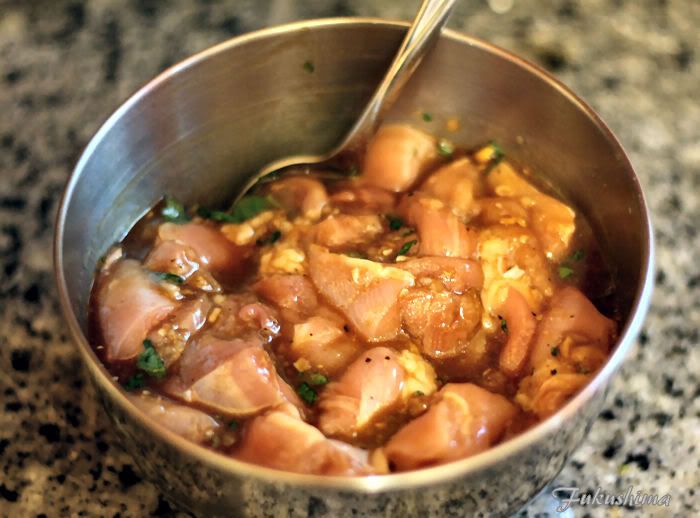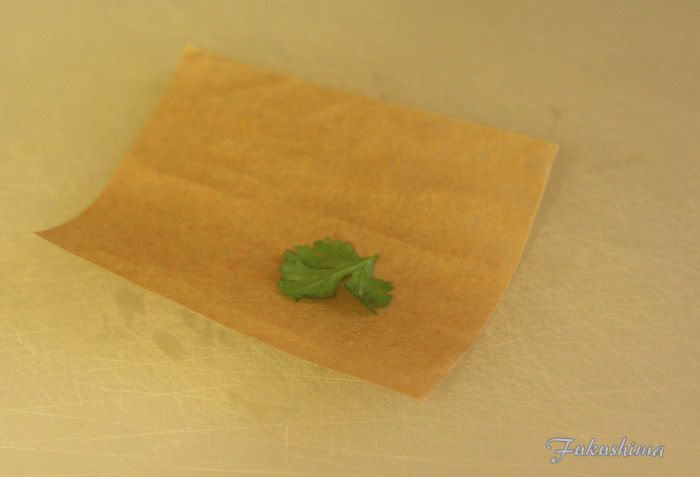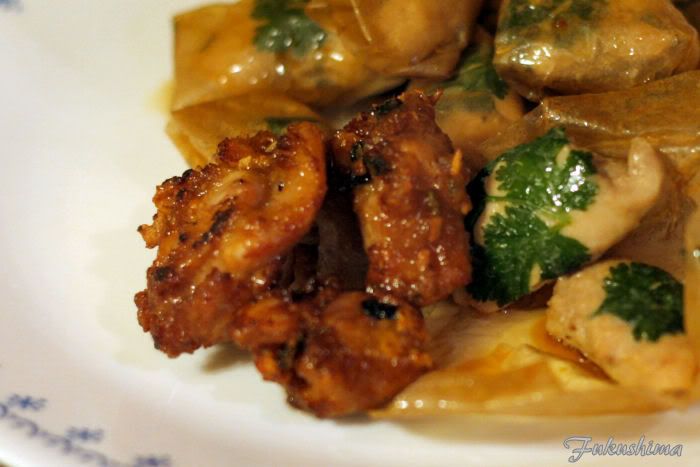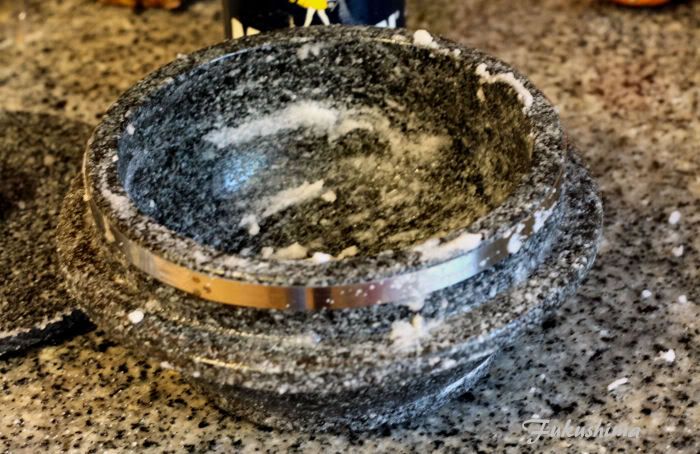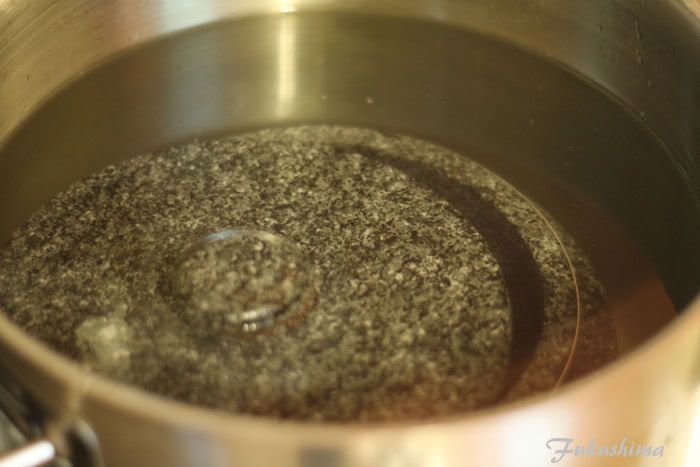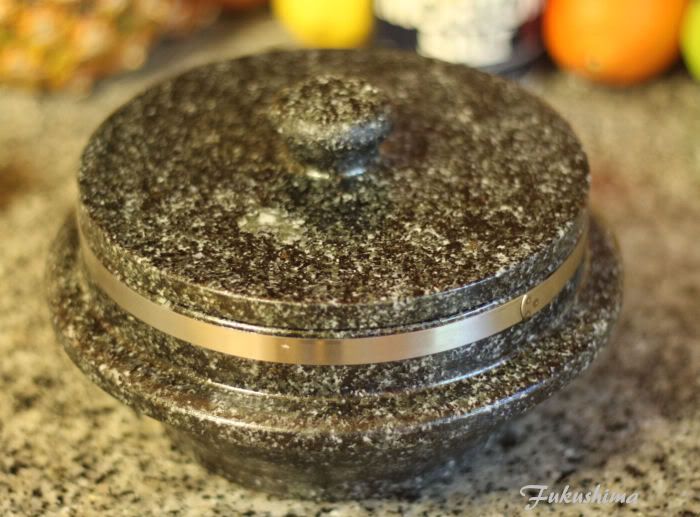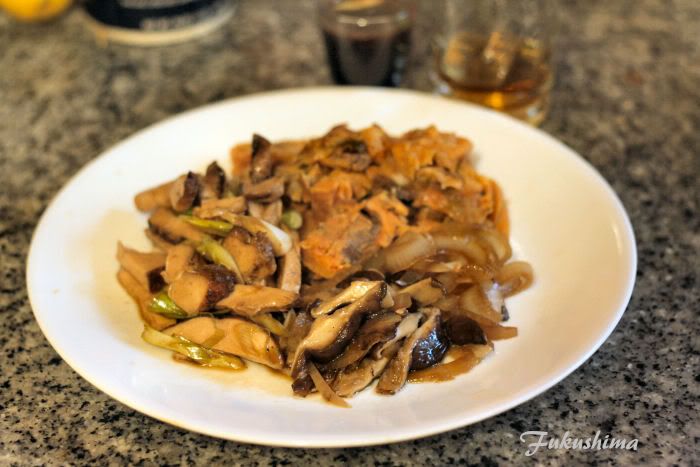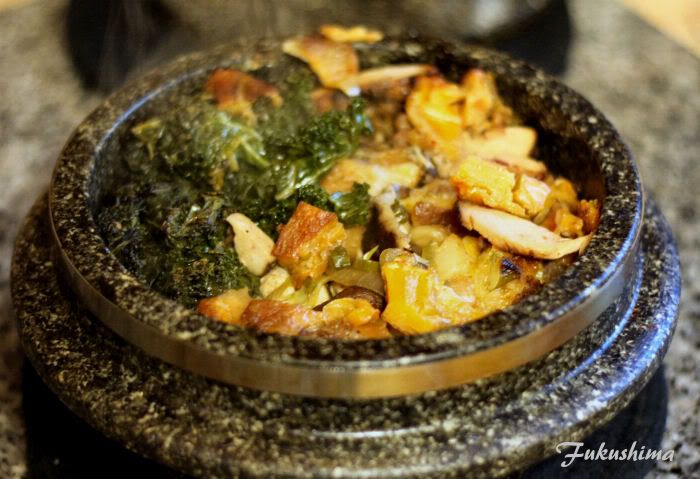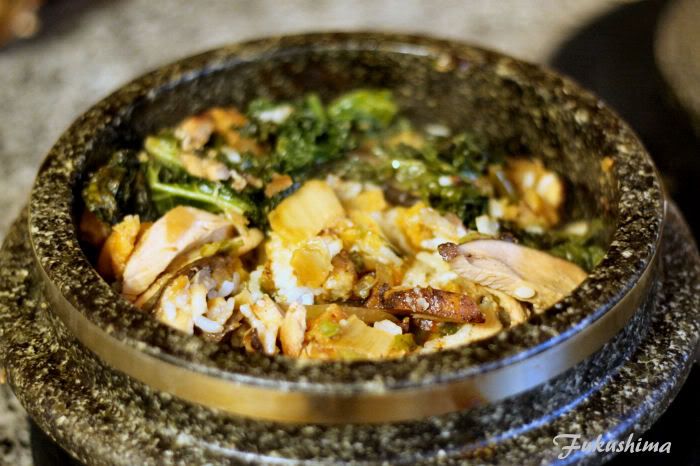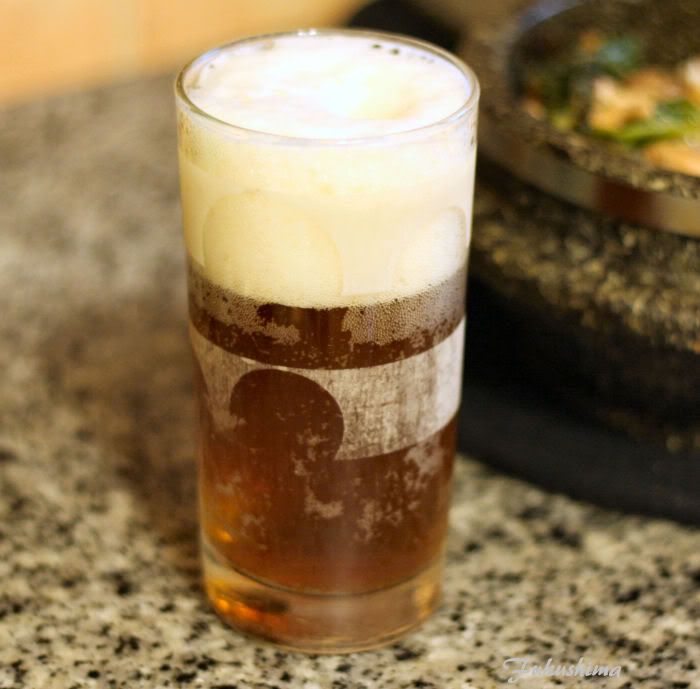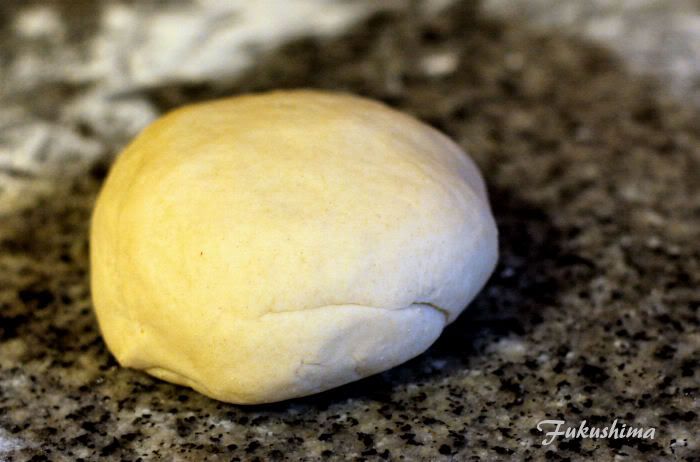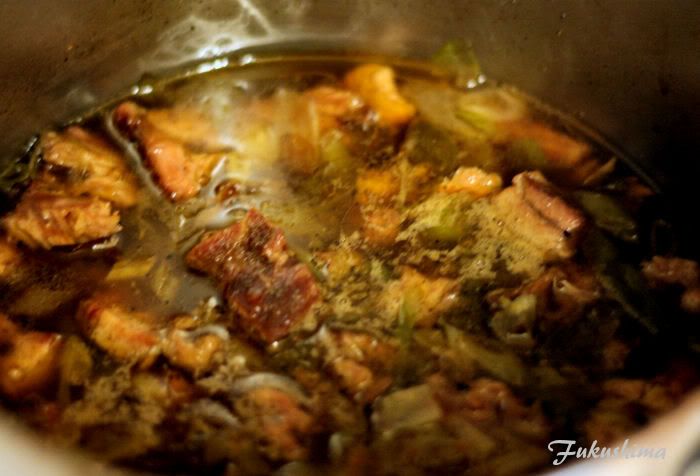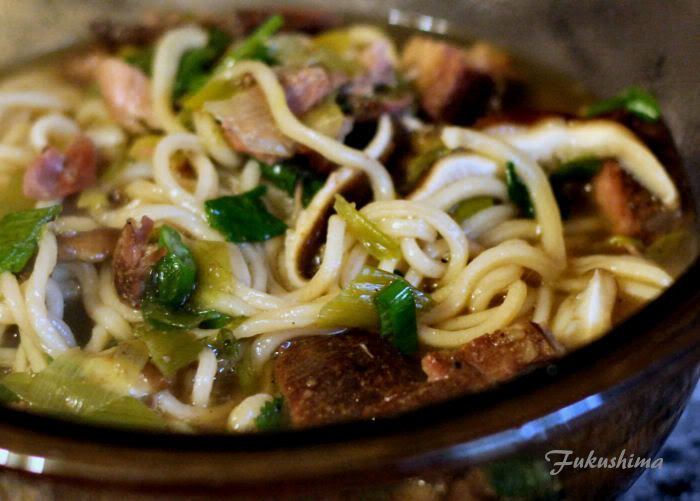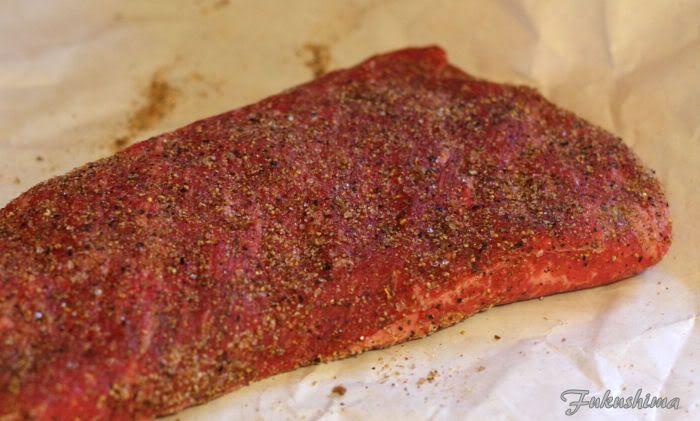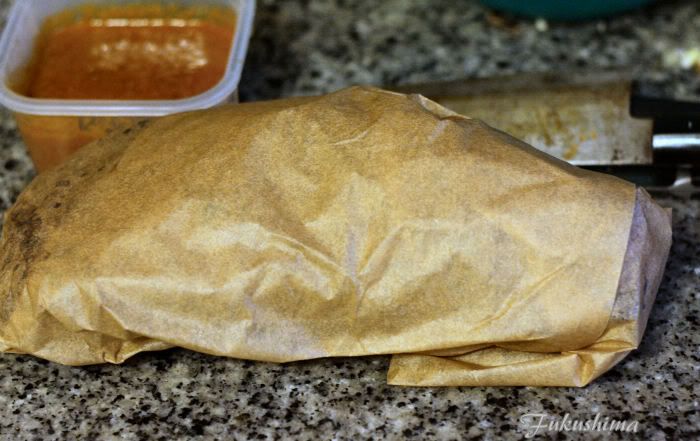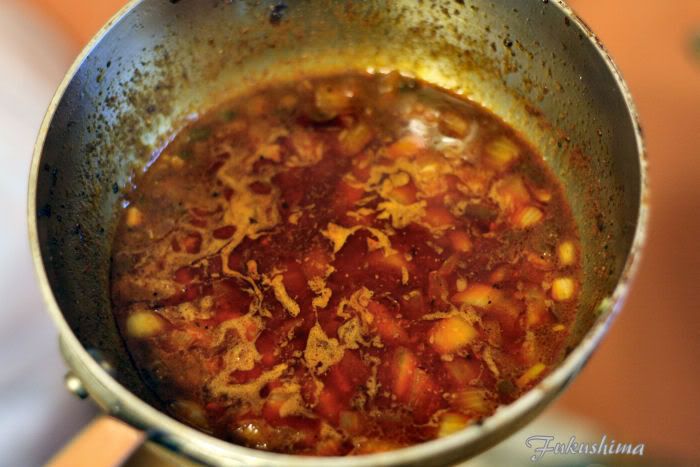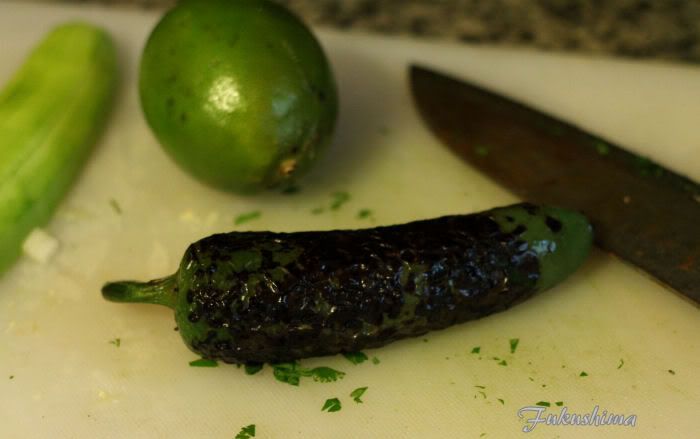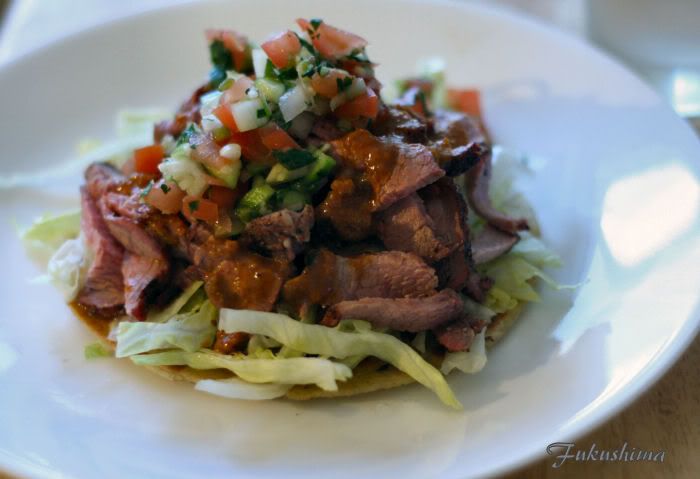Chicken in Parchment (Gee Bow Gai)
1/2 teaspoon vegetable oil (I use untoasted sesame oil)
1/2 teaspoon soy sauce (I use Japanese shoyu)
1 teaspoon Chinese parsley, minced (a.k.a. Cilantro)
1 teaspoon green onion
1/2 teaspoon red seasoning sauce [Hoy Sein Jeong] (Hoisin Sauce)
1 pinch salt (I used 1/8 cup Red Boat Fish Sauce instead of salt and MSG)
1 pinch monosodium glutamate
Here is where I diverge, I love the effect of ginger and garlic in Chinese cooking, this recipe really wants some of that, so I added 1 garlic clove minced and sone ginger, peeled and about 1 inch long and 1 inch thick, chopped. I also added a pinch of turbinado sugar, as it works well with the fish sauce. All of the above ingredients were placed in a bowl and muddled vigourously with a stick of wood.
Marinade ready to go
Once this was done, I used 1 cup of skinless boneless thighs, cut into one inch pieces, for the chicken. Johnny Kan used chicken filet, which I interpret as chicken breast. Thighs are cheaper. I marinaded for one hour.
Marinaded, unlike the cook
From here, pieces of parchment were cut into 2" squares, 3" squares would have worked better, the notes in the book say that. Foo! Who reads books! Anyways, I like to place a leaf of cilantro in the middle of the parchment, then the chicken then fold.
Cilantro Leaf
Chicken placed
Then folding the corner facing you up, fold the left corner in, then the right corner in, you should have something that looks like a parchment envelope, fold the top down and tuck it in. The idea is to get a nice tight sealed package. Foil is easier and looks like crap. Just my opinion. Fry in 3 to 4 inches of oil in a wok, you will want to fry in batched unless you have a large wok. I don't. Here is what you end up with.
See the nifty leaf?
The chicken is both fried and steamed, it has a unique character and due to the sealed in environment, it is also quite aromatic and intensely flavored once you open the packet. I love the texture of this method of cooking. Here is the cooks snack opened up.
Imagine these on a stainless serving dish
Chicken in Parchment!
From here, I decided I was done wrapping and decided to leverage the marinated chicken for a second dish. I took the marinaded chicken chunks, wiped them and coated with corn starch. I wanted to make a fine slurry, which was then tossed into the wok with several stems of cilantro to scent the oil. I fried in peanut oil, both for the flavor and smoke point. Here is the fried version, with a light crispy coating.
Fried!
You don't see Cantonese cooking much anymore, especially the stuff we grew up with, which was Americanized to fit the ingredients and tastes of the American market. I really enjoy this type of cooking, and the food, like all food, has that powerful effect of aroma and taste that transcends time. I love this marinade for wings as well, smoked or friend, stuffed of natural, this marinade really enhances chicken. Here is a plate of appetizers to finish off the blog.
Who needs dinner?

